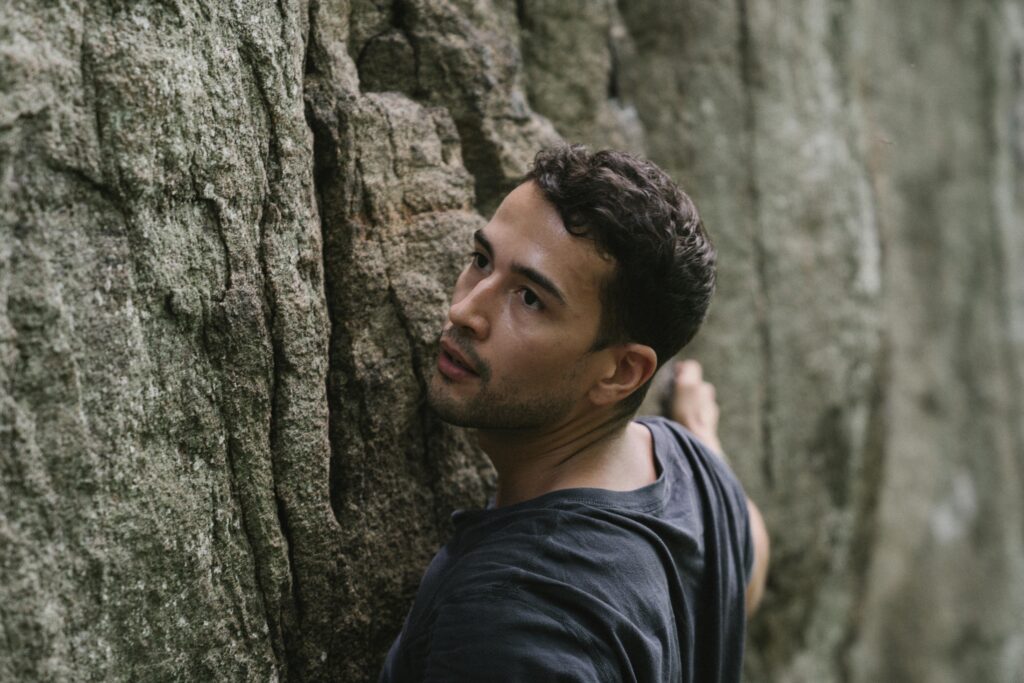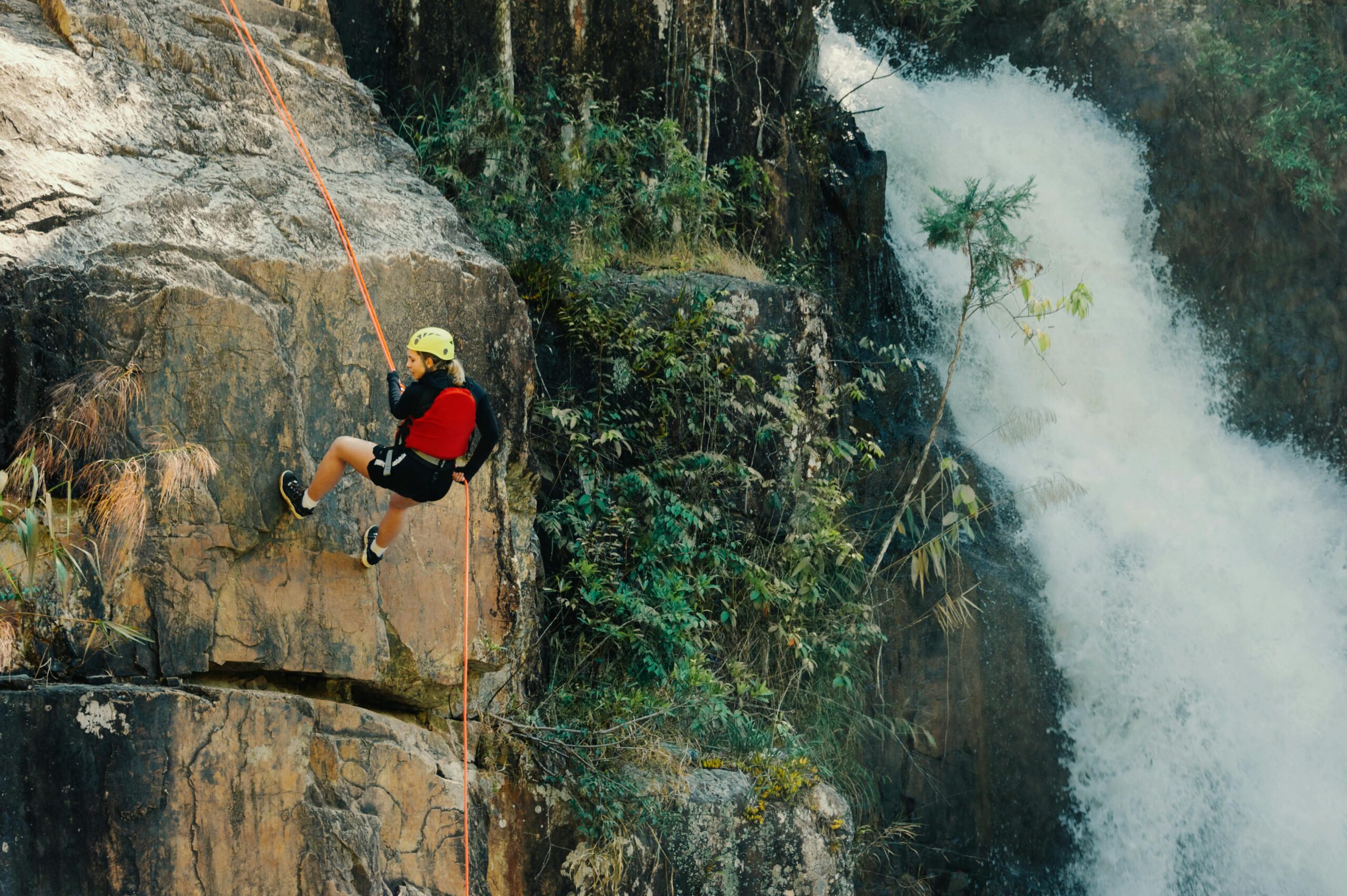Rock climbing is an exhilarating sport that combines physical strength, mental focus, and a sense of adventure. Whether scaling indoor walls or conquering towering cliffs, climbing offers a unique way to explore the world from new heights. For beginners, the world of rock climbing can seem daunting, with its specialized gear, techniques, and safety protocols. However, with the right guidance and preparation, anyone can start their journey toward becoming a skilled climber. This guide is designed to provide you with essential knowledge and tips to help you embark on your rock climbing adventures with confidence and excitement.
Understanding Rock Climbing
Rock climbing is a challenging and exhilarating sport that involves ascending natural or artificial rock formations using a variety of techniques and equipment. It requires strength, endurance, agility, and mental focus. Climbers use their hands and feet to navigate up a rock face, utilizing holds and cracks for support and stability. Whether scaling towering cliffs or indoor walls, rock climbing offers a unique blend of physical exertion and problem-solving.
Different Types of Rock Climbing
- Bouldering: Bouldering is a style of climbing performed on small rock formations or artificial boulders, known as boulder problems, without the use of ropes or harnesses. Climbers typically ascend short, challenging routes, relying on technique, strength, and balance to navigate intricate sequences of moves. Bouldering is often practiced on low-height walls with thick crash pads below to cushion falls.
- Sport Climbing: Sport climbing involves ascending predetermined routes on rock faces using fixed anchors for protection. Climbers clip quickdraws into bolts drilled into the rock as they ascend, providing safety in case of a fall. Sport climbing routes vary in length and difficulty, with climbers aiming to reach the top without falling or resting on the rope.
- Traditional Climbing: Also known as trad climbing, traditional climbing relies on removable protection, such as cams, nuts, and slings, placed into cracks and features of the rock to protect against falls. Climbers lead the route, placing and removing gear as they ascend, and rely on their judgment and skills to assess the quality of placements. Traditional climbing offers a sense of adventure and self-reliance, with climbers responsible for their safety.
- Indoor Climbing: Indoor climbing takes place on artificial climbing walls in gyms or recreational facilities. Climbers use holds and features bolted onto the wall to ascend routes of varying difficulty levels. Indoor climbing offers a controlled environment for beginners to learn and for experienced climbers to train year-round, regardless of weather conditions. It also provides a social atmosphere where climbers can connect with others who share their passion.
Each type of rock climbing offers its own set of challenges and rewards, catering to different preferences and skill levels. Whether scaling sheer cliffs or tackling dynamic boulder problems, rock climbing enthusiasts find fulfillment in the physical and mental aspects of the sport.
Essential Gear for Beginners
Climbing Shoes
Climbing shoes are one of the most important pieces of gear for any climber, especially beginners. These specialized shoes are designed to provide optimal grip and support on rock surfaces. They feature a snug fit and sticky rubber soles that allow climbers to confidently place their feet on small holds and edges. When choosing climbing shoes, beginners should look for pairs that offer a comfortable yet snug fit, as well as a balance between sensitivity and support.
Harness
A climbing harness is essential for safely attaching yourself to the climbing rope. It wraps around the waist and thighs and typically features gear loops for attaching carabiners, chalk bags, and other equipment. Beginners should select a harness that fits securely and comfortably, with adjustable leg loops for a personalized fit. It’s crucial to learn how to properly put on and adjust a harness to ensure safety while climbing.
Chalk and Chalk Bag
Chalk is used to absorb sweat and moisture from the hands, providing better grip on climbing holds. Climbers carry chalk in a chalk bag attached to their harness or around their waist. Beginners should invest in quality climbing chalk and a chalk bag that is easy to access during climbs. Using chalk can significantly improve grip strength and confidence while climbing, especially on long routes or in warm weather.
Climbing Rope
A climbing rope is a fundamental piece of safety equipment used to protect against falls while climbing. Ropes come in various lengths and diameters, with different types suited for specific types of climbing. For beginners, a dynamic rope designed for general climbing purposes is recommended. It’s essential to learn how to tie basic knots and properly manage the rope while belaying to ensure safety for both the climber and belayer.
Belay Device
A belay device is used by the belayer to control the rope and arrest the climber’s fall in case of a slip or fall. There are different types of belay devices, including tube-style and assisted braking devices. Beginners should start with a simple tube-style belay device, such as an ATC (Air Traffic Controller), and learn proper belaying techniques under the guidance of an experienced climber or instructor.
Helmet
A climbing helmet provides essential protection for the head against falling rocks, debris, or impacts during a fall. It is a crucial safety item, especially when climbing outdoors where loose rocks or accidental falls can occur. Beginners should wear a well-fitted helmet at all times while climbing to minimize the risk of head injuries. Look for helmets that meet safety standards and offer comfortable padding and adjustable straps for a secure fit.

Basic Techniques and Skills
Climbing Commands
Learning and understanding climbing commands is essential for effective communication between climbers and belayers. Common climbing commands include “On belay,” indicating that the belayer is ready to secure the climber; “Climbing,” signifying that the climber is ready to ascend; “Take,” requesting slack in the rope; and “Fall,” alerting the belayer of an impending fall. Clear and concise communication using these commands ensures a safe and smooth climbing experience for both the climber and belayer.
Footwork
Footwork is a foundational skill in rock climbing, as it directly affects balance, stability, and efficiency while climbing. Proper footwork involves using the feet to find and utilize footholds effectively, distributing weight evenly, and making precise placements. Climbers should focus on placing the entire sole of the foot on holds, engaging the toes for added grip, and using smearing techniques on smooth surfaces. Developing strong footwork skills improves climbing technique and conserves energy during ascents.
Handholds and Grips
Understanding different types of handholds and grips is crucial for navigating climbing routes efficiently. Handholds can vary from small crimps and edges to large jugs and slopers, each requiring specific gripping techniques. Common grips include crimping (gripping with fingertips), open-handed grips (using the entire hand), and pinching (squeezing holds between thumb and fingers). Climbers should practice switching between grips and adapting their hand positions to suit the shape and size of the holds encountered on the route.
Body Positioning and Movement
Body positioning and movement play a significant role in climbing efficiency and technique. Climbers should aim to maintain a balanced and stable body position, keeping the hips close to the wall and the center of gravity over the feet. Proper body positioning involves using the legs to push and generate upward momentum while engaging the core muscles for stability. Techniques such as flagging (placing one foot to the side for balance) and stemming (using opposing forces to stay balanced) aid in navigating challenging sections of a climb. Developing awareness of body positioning and movement helps climbers conserve energy and tackle routes more effectively.
Physical Preparation and Fitness
Before embarking on your first climb, it’s essential to engage in physical preparation and build adequate fitness levels. Rock climbing demands strength, endurance, flexibility, and agility. Incorporate exercises that target these areas into your fitness routine, such as bodyweight exercises, strength training, yoga, and cardio workouts. Focus on developing upper body and core strength, as well as improving grip strength, which is crucial for gripping holds and supporting your body weight while climbing. Additionally, work on flexibility exercises to enhance range of motion and prevent injuries while maneuvering on the rock face. Gradually increase the intensity and duration of your workouts to build stamina and endurance, preparing your body for the physical challenges of climbing.
Mental Preparation and Overcoming Fear
In addition to physical preparation, mental readiness is vital for a successful climbing experience, especially for beginners. Climbing can be intimidating, and it’s normal to experience fear and apprehension when facing heights and challenging routes. Practice mental techniques to overcome fear and stay focused while climbing. Visualize yourself successfully completing climbs and practice deep breathing exercises to calm nerves and reduce anxiety. Set realistic goals and celebrate small achievements to boost confidence and motivation. Remember to trust in your abilities and rely on proper training and safety measures to mitigate risks. Embrace the mental challenge of climbing as an opportunity for personal growth and self-discovery.
What to Expect on Your First Climb
Your first climb is an exciting and memorable experience that introduces you to the exhilarating world of rock climbing. Expect a mix of anticipation, adrenaline, and exhilaration as you prepare to ascend the rock face. You’ll receive guidance and instruction from experienced climbers or instructors on essential climbing techniques, safety procedures, and equipment usage. Take time to familiarize yourself with the gear and learn basic knots and belaying techniques before starting your climb. As you begin your ascent, you’ll encounter a variety of climbing holds, challenges, and obstacles along the route. Stay focused, maintain good communication with your belayer, and enjoy the journey as you navigate the rock, overcome obstacles, and reach new heights. Your first climb is an opportunity to learn, grow, and immerse yourself in the adventure of rock climbing, setting the stage for many more memorable climbs to come.
Benefits of Joining Climbing Groups or Clubs
Joining a climbing group or club offers numerous benefits for climbers of all levels, from beginners to experienced enthusiasts. Climbing groups provide a supportive and encouraging environment where members can share their passion for climbing, exchange knowledge and experiences, and foster friendships with like-minded individuals. Being part of a climbing community offers opportunities for socializing, networking, and forming lasting connections with fellow climbers. Additionally, climbing groups often organize group outings, training sessions, and skill-building workshops, allowing members to learn from each other, gain confidence, and improve their climbing skills together.
Connecting with Experienced Climbers
One of the significant advantages of joining a climbing group is the opportunity to connect with experienced climbers who can offer guidance, mentorship, and valuable insights into the sport. Experienced climbers bring a wealth of knowledge and expertise to the community, sharing tips, techniques, and safety practices to help newcomers navigate their climbing journey more effectively. By building relationships with experienced climbers, beginners can accelerate their learning curve, receive personalized advice, and gain access to valuable resources, such as gear recommendations and route beta. Mentoring relationships within the climbing community foster growth, camaraderie, and a sense of belonging among members.
Participating in Climbing Events and Competitions
Climbing groups and clubs often host or participate in various climbing events, competitions, and outdoor excursions throughout the year. These events provide opportunities for climbers to challenge themselves, test their skills, and push their limits in a supportive and competitive environment. Whether it’s a local bouldering competition, a multi-pitch climbing trip, or a weekend climbing festival, participating in climbing events fosters camaraderie, camaraderie, and a sense of community among participants. Climbing events also offer a chance to meet climbers from different backgrounds, share experiences, and celebrate the joys of climbing together. Additionally, competing in climbing competitions can be a fun and rewarding way to set goals, track progress, and showcase your climbing abilities while cheering on fellow climbers and celebrating achievements.
FAQs
Q. What is rock climbing?
A. Rock climbing is an outdoor activity where participants ascend, descend, or traverse natural rock formations or artificial rock walls. The goal is to reach the summit or the endpoint of a pre-defined route without falling.
Q. What equipment do I need to start rock climbing?
A. To start rock climbing, you will need a climbing harness, climbing shoes, a helmet, a belay device, carabiners, and a climbing rope. Beginners often start with a chalk bag to keep their hands dry.
Q. Is rock climbing safe for beginners?
A. Yes, rock climbing can be safe for beginners if proper safety measures are followed. Climbing in a gym with an experienced instructor, using appropriate equipment, and understanding basic climbing techniques can help ensure safety.
Q. Do I need to be very strong to start rock climbing?
A. No, you do not need to be very strong to start rock climbing. While strength can help, climbing techniques rely heavily on balance, flexibility, and problem-solving. Strength builds over time with practice.
Q. Can I climb outdoors as a beginner?
A. Yes, beginners can climb outdoors, but it is recommended to start with indoor climbing to learn the basics. When transitioning to outdoor climbing, it is best to go with experienced climbers or a guide.
Q. What are the different types of rock climbing?
A. The main types of rock climbing include bouldering, sport climbing, traditional (trad) climbing, top-rope climbing, and free soloing. Each type varies in terms of equipment used, techniques, and safety measures.
Q. How do I find a rock climbing community or partner?
A. You can find a rock climbing community or partner through local climbing gyms, social media groups, or online climbing forums. Joining a climbing club or taking classes is also a great way to meet other climbers.
Q. What should I wear for rock climbing?
A. Wear comfortable, flexible clothing that allows full range of motion. Climbing-specific pants or shorts, a moisture-wicking top, and climbing shoes are recommended. A helmet is essential for outdoor climbing.
Q. How do I improve my rock climbing skills?
A. Improving rock climbing skills involves regular practice, learning from experienced climbers, focusing on technique, and building strength and endurance. Taking climbing courses or hiring a coach can also accelerate improvement.
Conclusion
Embarking on your rock climbing journey is a thrilling venture that promises both physical challenges and rewarding experiences. As you become more familiar with the gear, techniques, and climbing community, you’ll discover that rock climbing is not just a sport, but a lifestyle that fosters camaraderie, resilience, and a profound connection to nature. Remember, every climber starts as a beginner, and with patience, practice, and a positive mindset, you’ll progress and reach new heights. So gear up, stay safe, and enjoy the climb – the adventure is just beginning.




